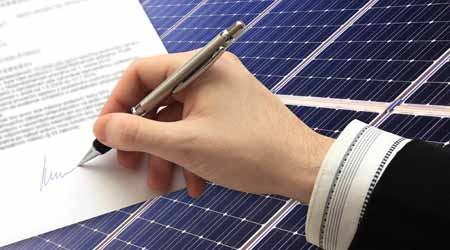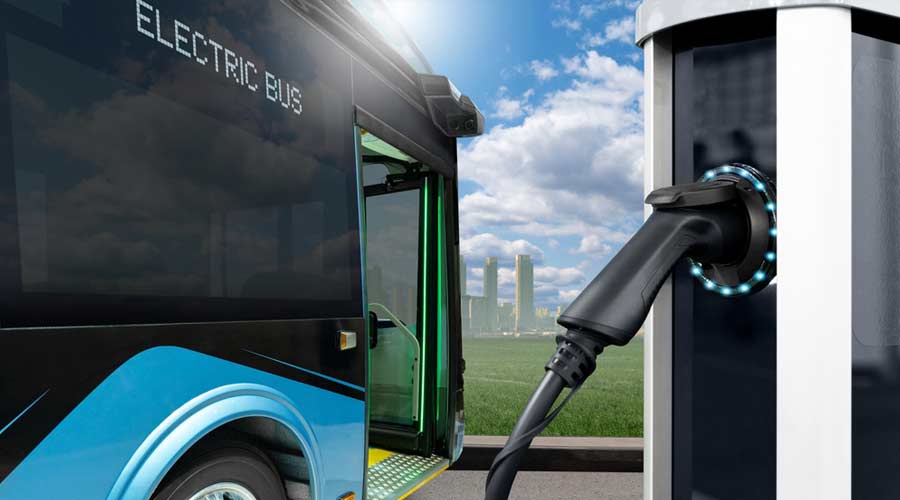How Green Leases Help Achieve Green Buildings
A green lease can bring about huge energy efficiency and sustainability gains. Here are some tips on how to do green leases right.
In the United States, 50 percent of commercial space in the country is leased, according to the Department of Energy. Commercial building leases, however, present challenges both for tenant and landlord. These challenges can often lead to buildings not being as sustainable, efficient, or high-performing as they could be. Today’s social and business norms combined with rapid changes in technology are accelerating the disintermediation trend within the real estate industry. Given this reality, it makes sense to consider replacing the traditional lease with a legal document that fosters collaboration and aligns the economic priorities of both parties while also addressing important factors like occupant health and wellness, as well as future energy and climate risks.
People spend 90 percent of their time indoors. So it’s no surprise that focusing more on the many ways buildings impact occupants should be a high priority both for tenants and landlords. As well, more and more evidence indicates a productivity bump from spaces with occupant health and wellness in mind. A recent analysis by stok on the financial case for high-performance buildings found a 3 percent improvement in productivity, a 5 percent increase in employee retention, and a 30 percent reduction in absenteeism can be realized in a high-performance building. The real estate market is waking up to the value of high-performance buildings that factor in occupant satisfaction, as demonstrated by the growing number of popular building certifications that focus on human health and wellness, such as Fitwel, LEED v4’s materials credits, the Living Building Challenge, and the WELL Building Standard.
As this focus on health, wellness, and high-performance continues, we must ensure that the landlord-tenant relationship is supported with a lease that keeps pace. To remain competitive and resilient, leases need to be structured in a way that enables a building to be highly efficient, incorporate health and wellness, and have a lower carbon footprint. By doing so it also helps to achieve traditional green building certifications such as LEED that command better net operating income, higher occupancy, and greater long-term value.
Enter the green lease
There are several ways to define a green lease, also known as a high-performance lease. Fundamentally a green lease is a standard lease which contains energy or sustainability-focused clauses that align costs and benefits between the landlord and tenant. In many commercial lease structures, the party expending capital for an energy efficiency upgrade does not sufficiently benefit from the energy savings created by that upgrade — a dilemma often called the split-incentive problem. This occurs most frequently in leases where tenants pay for utilities but the landlord is wholly responsible for capital improvements, as is the case in many net leases. The split-incentive barrier is frequently cited by property owners as a key roadblock to investing in energy efficiency projects. By addressing the split incentive and other energy issues, green leases open up a pathway to greater energy and financial savings and higher performing properties.
A study by the Institute for Market Transformation (IMT) shows that green leases have the potential to reduce energy consumption in U.S. office buildings alone by as much as 22 percent, yielding reductions in utility expenditures in commercial buildings up to $0.51 per square foot. This research shows that when executed, green leases have the potential to provide the leased U.S. office market $3.3 billion in annual cost savings.
Adopting green lease practices doesn’t require reinventing the wheel. By including a handful of new or modified clauses in a traditional lease, both owners and tenants can better realize the shared benefits of investing in energy efficiency measures.
Here is an example lease provision that addresses the split incentive, which is included in the Green Lease Leaders Reference Guide for Landlords:
“Landlord may include the costs of certain capital improvements [intended to] [that] improve energy efficiency in operating expenses of tenant space. The amount passed through by Landlord to Tenant in any one year shall not exceed the prorated capital cost of that improvement over the expected life cycle term of that improvement [and shall not exceed in any year the amount of operating expenses actually saved by that improvement]. Interest/the cost of capital can be included.”
Landlords can also adopt lease language that allows them to recoup all operational savings resulting from energy efficiency improvements that enhance occupant comfort and drive savings, up to the point where the landlord has been repaid for the original capital expenditures. Here is an example pass-through clause that was implemented by Brandywine Realty Trust:
“Capital expenditures and capital repairs and replacements shall be included as Operating Expenses provided such capital repairs or replacements were necessitated by a change in Law occurring after the date of this Lease or were intended to have cost saving benefits over the Term and amortized costs of same over the useful life of the improvement in accordance with generally accepted accounting principles or with respect to cost savings, over the payback period of such improvement.”
Related Topics:














